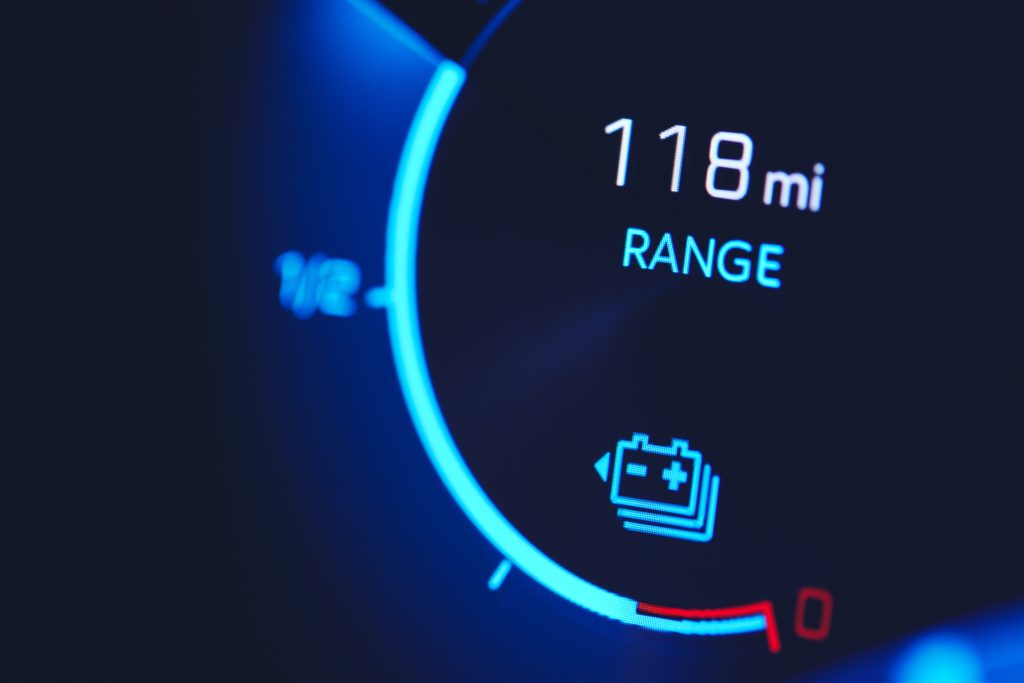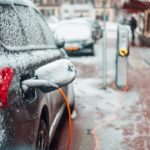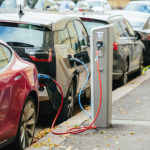There’s an electric vehicle revolution happening within the automotive industry. General Motors was one of the first major vehicle manufacturers to go all-in on electric, vowing to make their entire lineup zero emissions by 2035. But now, nearly every automaker has announced goals to make major moves toward electrification.
Because electric vehicles (EVs) are currently such a hot topic, there’s an overwhelming amount of information (and misinformation) to sort through. To help out, we’re going to dispel some of the most common myths so that you can separate fact from fiction.

10 Common Myths About EVs
The electric revolution has proven to be quite polarizing. Some people believe EVs are the ticket to a bright new future, while others feel the technology will cause countless problems.
Regardless of which side of the fence you’re on, it’s a good idea to clear up some of the common misconceptions regarding EVs. That way, you can be better informed and better prepared for the future of transportation.
1. EVs are Worse for the Environment than Traditional Vehicles
One of the main misconceptions about EVs is that they’re worse for the environment than traditional models. This assumption is based primarily on the fact that much of the electricity in the United States is generated by non-renewable fossil fuels, including natural gas, coal, and petroleum.
But according to the Environmental Protection Agency (EPA), EVs have a smaller carbon footprint—despite the environmental costs associated with charging—compared to traditional models. Moreover, if the United States were to use more renewable energy sources (wind, solar, etc.), the environmental impact of EVs could be reduced even further.
2. The High-Voltage Battery Packs Degrade Quickly
It’s easy to see why many consumers expect EV battery packs to degrade quickly. After all, the 12-volt batteries found in traditional cars typically only last between three and five years. So, why wouldn’t high-voltage EV batteries have a similar lifespan?
Well, for one, the chemistry is completely different between the two battery types. Nearly all EV high-voltage batteries use lithium-ion technology, whereas most 12-volt batteries rely on lead-acid chemistry. The lithium-ion batteries found in EVs tend to have a very long lifespan—much longer than traditional, 12-volt lead-acid batteries.
Every EV battery sold in a car in the United States is covered under warranty for at least 8 years or 100,000 miles—and many live long beyond that coverage. Some studies estimate the average life of an EV battery to be around 200,000 miles (17 years if driven 12,000 miles annually).

3. EVs Are Too Expensive
In the beginning, consumers had only a handful of EVs to choose from, most of which were luxury vehicles from brands like Tesla and Fisker. But now, many different kinds of EVs are coming to market in nearly every price range.
Certain models are also eligible for a federal tax credit of up to $7,500 and possibly additional state and/or local incentives. The Biden administration has also proposed legislation with a provision to offer a consumer credit of $7,500, plus an additional $4,500 on vehicles assembled in the United States by union workers.
4. The Driving Range is Extremely Limited
When EVs first started hitting dealership showrooms about a decade ago, most had a rather limited range. For example, the 2011 Nissan Leaf had a maximum range of about 70 miles per charge.
However, now it’s common for EVs—and we’re not just talking about Tesla models—to travel 300 miles or more per charge. For example, the Kia EV6 has an EPA-estimated range of 310 miles for the high-end model, and the Lucid Air Touring has an EPA-estimated range of over 500 miles.

5. The High-Voltage Battery Packs Often Explode and Catch Fire
You might remember when Samsung recalled about a million of its Galaxy Note 7 phones because some were overheating and catching fire. Well, like cell phones, nearly all EVs use lithium-ion batteries, which makes some people worry that the cars might be prone to bursting into flames.
In reality, though, most experts agree that EVs are less likely to catch fire than traditional vehicles. EVs have complex battery management systems that are designed to keep temperature levels down and prevent thermal runaway.
In addition, there are even safer battery chemistries, such as solid-state lithium-ion, set to debut in the near future.
6. All EVs are Slow and Boring
In the past, the types of EVs available to consumers were rather limited. But now, automakers are coming out with a wide range of electric offerings, ranging from pickup trucks to muscle cars. Soon, there will be an EV for nearly everyone, from the rancher who needs a truck to the enthusiast who wants to go fast.

7. Most Used EV Batteries Will End Up in Landfills
Around 98% of the lead-acid batteries found in conventional vehicles are recycled, and those batteries typically cost less than $200.
Meanwhile, the lithium-ion batteries found in EVs (and the materials inside) cost thousands of dollars. So, you can bet that most EV batteries will either get rebuilt and put back into service or recycled for their materials.
8. Most EVs Take Forever to Charge
With each model year, more vehicles are coming with fast-charging capabilities. For example, the Hummer EV has an 800-volt electrical architecture with a 350-kilowatt fast-charging capacity. The setup allows the SUV to add 100 miles of range in just 10 minuteson a suitable DC fast charger.
These cars with fast-charging capabilities are being complemented by a greater number of DC fast chargers rated at 300 kilowatts or more. In the past, most DC fast chargers were of the slower, 50-kilowatt variety. However, one study found that during the first quarter of 2021, one in ten DC fast chargers was rated at more than 300 kilowatts.

9. The Power Grid Won’t be Able to Support the Growing Number of EVs
While you might think that the power grid can’t possibly support the growing number of EVs, most experts agree that the grid will be just fine. Because EVs won’t all be charging at the same time, the additional demand on the grid will be manageable with the right planning. Example strategies include incentivizing off-peak time charging and making peak charging more expensive.
10. There Isn’t Enough Lithium to Support EVs
These days, lithium is a hot commodity because it’s used in everything from cell phones to laptops—and (of course) EV batteries. That makes some skeptics question whether there’s enough of the coveted metal to go around.
Fortunately, research indicates that even if there was zero battery recycling and nearly everyone bought an EV, there would still be enough lithium for EV production for the next 75 years. Plus, it’s expected that most EV batteries will be rebuilt or recycled to reduce the need for fresh lithium. New lithium extraction sites are also on the horizon.

Where to Get a New Headlight for Your Vehicle
Like any other vehicle, EVs can develop issues with various parts, such as headlights. Ignoring a faulty headlight can lead to more severe electrical problems that affect other, more expensive parts and systems. There’s no need to fear, however, because CarParts.com is here to provide you with a high-quality replacement headlight.
CarParts.com carries a wide array of headlights for various vehicles, including common EVs from popular brands like Tesla and Ford. As a leading retailer of world-class auto parts, we want to give you peace of mind when shopping for parts online. This is why we only source our products from established manufacturers that you trust. Use your phone to access our easy-to-navigate website, and search for a part that fits your vehicle by entering its details into our vehicle selector. Furthermore, our customer service team is always available to lend you a hand.
Check out our selection of headlights and more for your EV at CarParts.com. Don’t miss out on the best deals on our headlights, and get the right part for your vehicle!
Any information provided on this Website is for informational purposes only and is not intended to replace consultation with a professional mechanic. The accuracy and timeliness of the information may change from the time of publication.


















OK, we have seen gas taxes go up because for a long time now gas powered cars use less gas so the people buy less gas and the tax revenue goes down, hence higher taxes. the same thing is going to happen to electricity, It’s going to get taxed BIG TIME@ You watch.
Not only that, but EVs not participating the gas tax that supports road and bridge maintenance and construction means they’re driving on the roads but not helping with their upkeep.